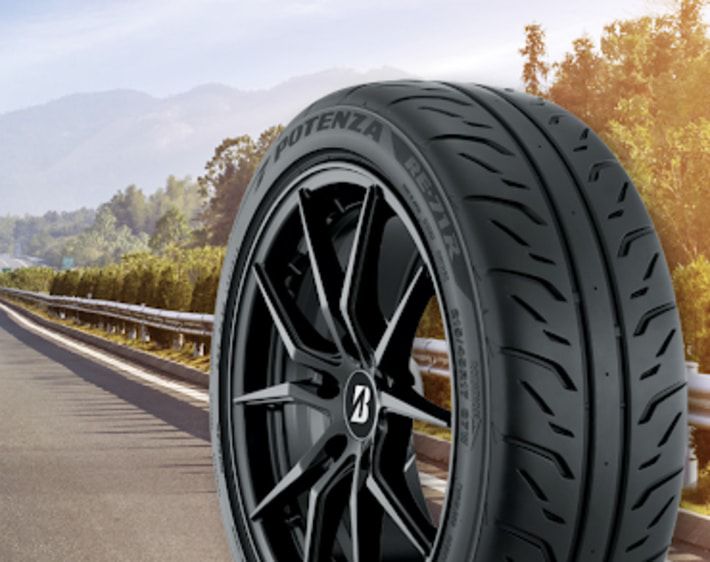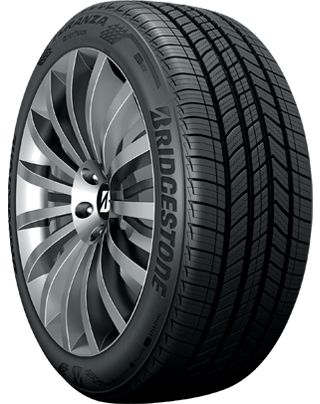Are you noticing an unusual vibration in your usually smooth ride? If your ride feels “jittery,” especially after not driving for a few weeks, you may have flat spots on one or more of your tires.
There are a few common causes of flat-spotted tires and some symptoms to look out for if you think your tires could be at risk. Learn what tire flat-spotting is, what causes it, and what to do if you have a flat spot on your tire.
What is flat-spotting on tires?
Flat-spotting occurs when a flat and rigid patch develops where the rubber of your tire meets the ground below it. This surface is known as your tire’s contact patch.
When parked for extended periods of time, your car’s weight and pressure bear down on the same contact patch continuously (as opposed to the contact patch changing every time you re-park your vehicle), which is why flat spots are common after long-term parking.
Typically, tire flat-spotting compromises the integrity of the tire, making an entire area worn in and uneven. When this happens, it may cause some noticeable symptoms.
What are the symptoms of flat-spotting?
Here’s a quick checklist that may help alert you to flat-spotted tires.
Visible Flat Spots
Sometimes you can see the flat area on one or more tires, especially if the car has been sitting idle for extended periods. Unlike a deflated tire that's been punctured, the flat spot in a flat-spotted tire remains in the same place as the tire rotates.
Tire flat spots won’t always be readily visible, in which case the tire treads should be examined side-by-side and compared to each other to identify unusual wear patterns. However, unmounting tires, comparing them side-by-side, and having the expert observation skills to locate unusual wear patterns is not an easy job! In fact, if you’ve left your car parked for a long time, it’s a good idea to get a professional to look at your tires during a free courtesy check at your local Firestone Complete Auto Care.
Vibrations
A red flag indicative of tire spotting is feeling a vibration when driving, according to Cars.com. Depending on your speed, you may feel the tires “shimmy” fast or slow as you drive. However, a vibrating sensation in your car can be a symptom of a variety of issues. Get a professional opinion to be sure.
Thumping
You may also notice a bumping noise when driving on a tire with a flat spot. As the flat spot hits the road, it may create a rhythmic thumping sound. Like vibrating, thumping can be attributed to different car issues, so it’s best to get expert help before deciding what’s wrong with your car.
Difficulty Steering
Flat spotting is a form of uneven wear that may cause your tires to become imbalanced and therefore throw your steering capabilities for a loop, too! When driving on flat-spotted tires, you may notice it becomes harder to maneuver your steering wheel under specific conditions like when the tires are “cold” upon first starting the car or when driving at higher speeds.
What are the common reasons flat spots appear on tires?
The common culprit: parking for too long.
There are a few causes of tire flat-spotting, but the most common reason a tire gets flat spots is long-term parking. If you’re wondering how long before tires get flat spots, the answer may surprise you. According to Edmunds, leaving a car parked for as little as one month may be enough time to develop severe tire spotting.
If you’re planning on storing your car for weeks or months, properly prepare your vehicle for storage to help prevent flat-spotting and preserve vehicle performance.
Cold weather may lead to flat-spotting.
Tire flat-spotting tends to occur more in cold climates or when the temperature swings from high to low. Low temps can cause a drop in air pressure, which may lead to low tire pressure. Low tire pressure, especially in parked cars, can make tires more susceptible to flat-spotting. Checking your tire pressure at least once a month can help maintain your tires’ lifespan — you can do it yourself or visit your local Firestone Complete Auto Care for a free tire pressure check.
Aggressive braking can cause flat spots, too.
Hard and sudden braking can lead to flat-spotting in tires. When you hit the brakes hard enough to skid across the pavement, the friction from the tire meeting the road can wear down tire treads. This may cause a flat spot to occur and warrants a tire check with a professional, especially if you notice flat-spotting symptoms.
How to prevent tires from flat-spotting
If you plan on storing your vehicle for longer than a couple of weeks, you may want to take car tire flat spot prevention measures:
- Inflate your tires to the manufacturer-recommended levels and check the air pressure once a month.
- Make arrangements to move your car every couple of weeks if you plan on storing it for months to maintain the tires' integrity and prevent tires from wearing.
- Take the weight off of the tires by properly putting the vehicle on blocks or jack stands.
What to do if you identify a flat spot
Flat spots can compromise your tires, which can compromise your vehicle’s performance and your safety on the road! If you notice vibrating, thumping, or a loss in steering capacity, visit your local Firestone Complete Auto Care to have an auto technician diagnose the issue. We’ll figure out if your tires are flat-spotting or if your troubles are due to a different problem, and give you the recommendations you need to make repair decisions for your car!



